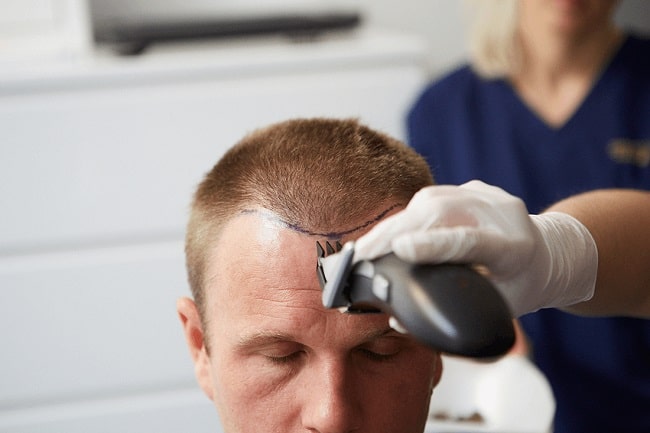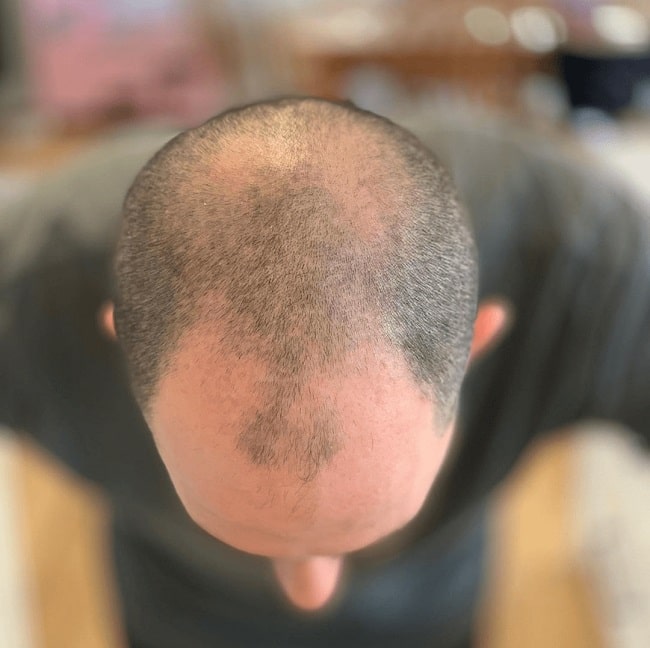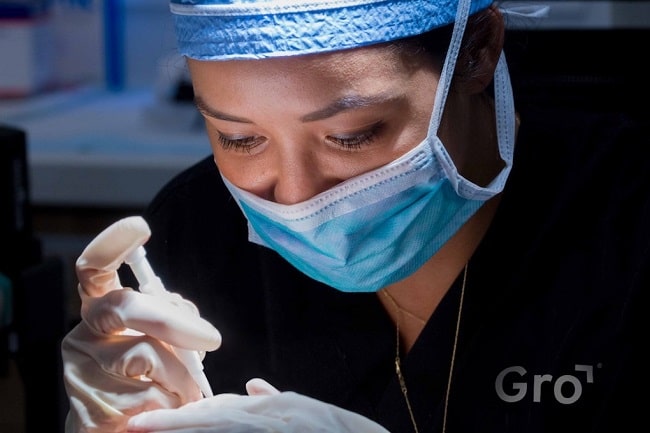1
HOME > Hair >
WHAT TO KNOW ABOUT THE MICRO FUE HAIR TRANSPLANT PROCEDURE
Written by Menswear Style in Hair on the 12th February 2021

Loss of hair due to a stressful environment, hormones, hereditary factors, or any other reason, impedes self-esteem, self-confidence, and the image of ourselves we want to communicate with other people. For sure we want to do anything possible to bring it back - try all sorts of lotions and potions, increase vitamins and minerals intake, and change our diet. But when none of these give results, there is one more prospect to hold on to. The very recent Follicular Unit Extraction (FUE) has become one of the most popular cosmetic treatments across the western world, and especially in Britain, and now expanding to the faster-growing regions of Asia and the Gulf countries. If you’re considering this hair transplantation technique let’s see what you should know about it.
A Hair Transplant?
Available since the 1950s, this type of surgery is not a new player in a team of cosmetical operations. The scientific base of hair transplantation surgery is based on the theory of donor dominance in androgenic alopecia: if a transplant is taken from an area destined to be permanently hairy and transplanted to an area suffering from baldness, it will grow hair in its new site as long as it would have at its original site. The ability to provide very natural-looking results has encouraged a large number of people to opt for this solution and since then, hair transplantation has become one of the most rapidly evolving procedures in aesthetic surgery, accompanied by regular improvements in techniques.

Old Vs. New
Hair transplantation surgery can be principally divided into two main methods: Follicular Unit Extraction (FUE) and Strip surgery (FUT). Both involve reshuffling hair from one area of the head to another; however, they use different methods in harvesting the follicular units, and here is the biggest difference between the two. With traditional Strip surgery, bistoury or scalpel are required where stitches are leaving a permanent linear scar at the back of the head which can be difficult to disguise. With the appearance of FUE and more importantly Micro FUE (use of thin needles with a diameter of between 0.6-0.8mm and a micro motor), there are no visible scars in the donor area and the healing is very rapid following the procedure because the surgeon uses a specialised punch that extracts individual hair follicles and implants them individually on the area that is bolding. This way the hair from the donor area retains its own genetic characteristics and will grow naturally.
Although the Micro FUE technique is full of advantages compared to older ones, there are still some preconditions it has to meet. According to Gro Clinics in Manchester, each operation must be done by experienced and trained medical doctors (not technicians), with a proper understanding of the technique regarding grip, angle, the planning of the hairline, motion, and size of the punch. Other factors to consider are lighting, magnification, and equipment.

What to Expect
Besides the scratches that will heal up without scarring and natural dense packing results, the other perks may be:
- The shorter recovery time and lesser pain in the days after the operation.
- No damage or loss of hair follicles.
- General anaesthesia is not necessary, only a local one is used.
- The extraction of follicles can continue as long as the patient wants or you can have multiple interventions in a few days.
- No shock phenomenon will happen after the session.
- You can expect a high percentage of the transplanted hair to grow back.
- This technique can be used for small procedures such as transplanting facial hair - eyebrows, mustaches and beards, and eyelashes.

The advantages of the Micro Fue method are many, and contraindications are very few. However, some hair patterns may not be suitable, and that is why planning and examination before the operation are very important. The Fox test is usually used to determine if the patient is a suitable candidate or not by taking out a few grafts from the donor area and if the extraction is easy and complete, the surgeon should go ahead with FUE. You should also expect that transplanted hair generally falls out at the end of the first month and new hair normally begins to grow 2 to 3 months after the transplantation. The high price and the fact that medical insurance is not covering aesthetic surgeons is generally what draws many people away (that, and shaving your existing hair to a minimum). But the avoidance of a linear scar, short recovery time, the desire for a naturally pain-free post-operation period, or having a minimally invasive procedure are very good reasons to choose a blended method of science and art.
Trending
2
3
4
5
6
7
8
9
10









